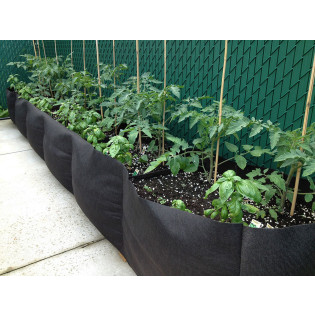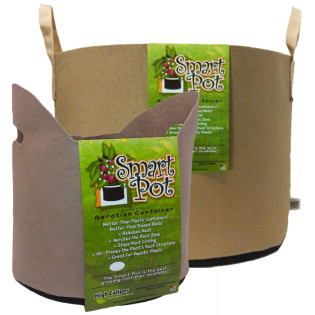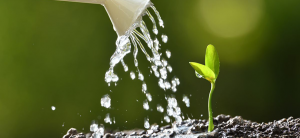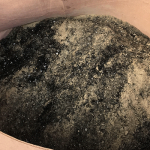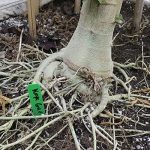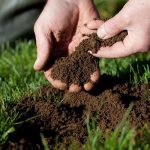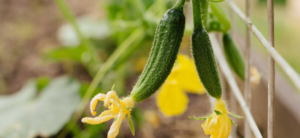
Whether your goal is to grow enough food to feed your entire family for the entire year - or just to create a pizza herb garden worth your neighbor’s envy - there are lots of benefits to growing produce in your backyard.
You don’t have to have a self-proclaimed green thumb to get started, either. With the right know-how and equipment, you’ll be well on your way to growing your favorite veggies and herbs in your backyard to meet whatever needs you have.
We’ll cover everything you need to know to start your backyard produce garden, including which varieties you should start with, planning your garden, preparing it, maintaining it, and obviously, harvesting it.
Choose What Produce You Want To Plant
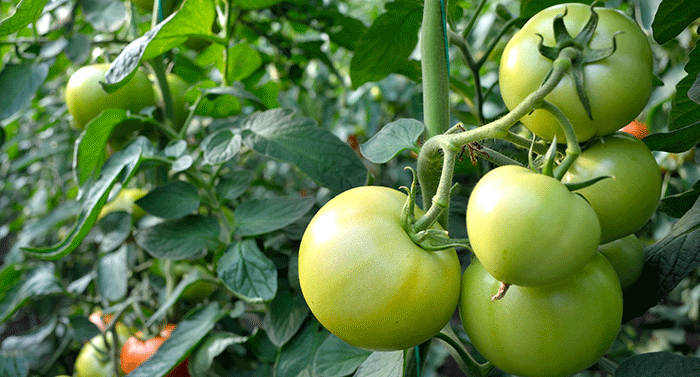
If you’re new to gardening, you’ll want to give some careful thought to what kinds of produce (and in what quantity) you actually need to plant.
Don’t go crazy in your first year. This will just lead to burnout, as you can get overwhelmed trying to take care of a small farm.
Instead, choose a few types of produce that are easy to grow and well-liked by the members of your family. Some good options for beginners include:
- Tomatoes
- Cucumbers
- Lettuce
- Spinach
- Herbs (basil, parsley, oregano, and rosemary are great starter options)
- Strawberries
- Raspberries
- Blackberries
When it comes to deciding how much to plant, consider how many mouths you have to feed and whether you want to put any extra work into preserving leftover produce at the end of the growing season.
Some types of produce, like lettuce, don’t hold over well even if you decide to do some preservation. So, you should be realistic about your needs.
If you only have two people in your family, you probably don’t need a dozen tomato plants (unless you’re going to can a bunch or make some tomato sauce).
Consider Your Growing Zone Requirements
Before you begin to plan your garden, consider your growing zone requirements. You can find out which zone you are in by entering your zip code into this helpful calculator.
Then, choose plants that are compatible with your growing zone. Plan your garden accordingly and look at the instructions on the back of your seed packets that will tell you when and how to plant.
For example, if you live in Minnesota, you aren’t going to be able to plant in February.
Adhere to these guidelines, as it can be quite disappointing to have a bountiful crop of tomatoes killed by frost before you’re able to harvest them.
If you’re uncertain how well the plants you have selected will hold up to your climate, why not plant in containers?
Then, you can move the plants inside at a moment’s notice in case of frost or huge storms.
What You'll Need To Start Growing Produce

If you are growing outdoors in your backyard, there aren't a ton of things you'll need. You'll need a few basic gardening tools, along with the essentials:
What If You Are Growing Produce Indoors?
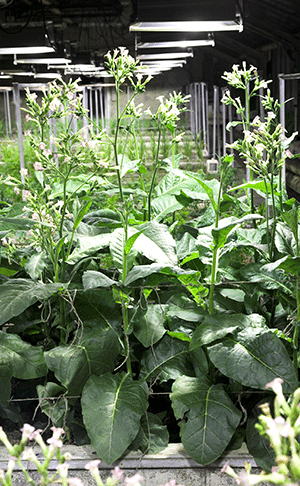
If you plan on at least starting plants indoors, you'll need some additional supplies.
You will definitely need a seed starting kit, which consists of a tray and dome, heat mat, plugs, and a light.
This will help you pop your seeds and get your produce sprouted before you move them outdoors.
But, if you want to actually grow your produce indoors, you can do that too.
The best way is with a grow tent kit, which includes everything you need to take your veggies, fruits, or herbs from seed to harvest:
- Grow Tent - contains the mess of your garden while creating a sealed environment for your plants.
- Grow Light - emulates the sun, providing your plants the light energy they need for photosynthesis.
- Ventilation System - will help you maintain the ideal growing environment by managing heat and humidty, while expelling hot, stale air from the growing space.
- Growing Accessories - tools to make your indoor grow more succesful, including thermometer/hygrometer, timers, hangers, clip-on fans, etc.
If this sounds like something that interests you, check out our complete guide on indoor growing.
Make the Most of the Space You Have
Think you need a massive, ten-acre plot of land in order to grow your own food?
Think again. You can easily grow all of your own produce, even if all you have to work with is a patio or terrace.
Some people are even able to grow enough to sustain themselves on a fire escape or in a small hydroponic set-up indoors!
You just need to get creative. For example, make an edible wall by growing vining crops, like beans and squash, that can be trained to grow up a wall or trellis against the side of your building.
No matter where you live or how much (or little!) gardening expertise you have, there are plenty of ways to make the most of your backyard to grow your own produce. You just need to be creative!
Starting Your Produce Garden

Once you've gathered your supplies, selected your seeds, and planned your garden, its time to actually start growing produce!
The first step is starting your seeds. Seeds need a few things for germination - heat, moisture, and light. If you provide them these, you should enjoy a high success rate. You can learn all about the actual process of starting seeds in our complete guide.
The alternative is to visit a local nursery or gardening store and find already sprouted plants to take home.
This will cut out one of the toughest parts about growing produce, while speeding up the timeline to when you can actually harvest and enjoy your food!
Try Out These Gardening “Hacks”
If you want to reduce the amount of time you spend working in your garden each day, there are a few “hacks” you’ll want to consider.
These tips will not only improve your yields but will make your daily chores easier and more efficient.
Raised beds are perfect for gardeners working with poor soil or on otherwise inhospitable ground.
Raised beds can be filled with loose soil that is fluffy and well-amended. Better yet, you can make raised beds out of just about anything.
The classic material is pressure- treated or rot-resistant wood (like hemlock or cedar), but you can also build raised beds out of things like old tires, cinder blocks, and pallets. Another idea? Plant intelligently.
You can plant seeds of certain fast-producing crops (like lettuce and radishes) in succession, planting several batches a few weeks after each other.
This will allow you to enjoy a constant harvest throughout the season. You may also want to give companion planting a try.
While proper spacing is essential, planting certain plants in close proximity together allows them to benefit from each others’ innate benefits to control pests, improve soil health, and increase odds for pollination. It’s a win-win for everyone!
Do I Have to Grow Organic Produce?
Lots of gardeners assume that they have to go organic just because they’re growing their own produce.
While many do - it’s often less expensive to use organic fertilizers like compost, for example - others are turned off by this idea.
They think that organic gardening will require them to forego beautiful, dense green foliage for pest-infested vegetables and fruits. But, that’s not the case.
While organic gardening will require a bit more thought and dedication to your garden, it often requires less work than “conventional” gardening and will enable you to grow delicious produce in your backyard without the use of chemicals.
The choice, of course, is entirely up to you! We carry both organic nutrients and synthetic nutrients, regardless of your decision.
Maintaining Your Produce Garden

Wouldn’t it be great if all gardening required was planting a few seeds and then sitting back and watching your plants grow?
Unfortunately, that’s not the case.
While some plants admittedly require very little work, others can be quite needy.
You need to provide your plants with lots of attention throughout the entire growing season.
Make sure you are watering regularly and keeping an eye on the most common garden pests, like aphids and mites.
You will also need to weed on a regular (at least weekly) basis and fertilize often, too. How often you feed will come down to which varieties you are growing, your climate, the type of soil, etc.
Preserving Your Produce Long Term
If you have a gorgeous garden that has produced delicious fruits, herbs, and vegetables for you all season, you might be wondering if there’s any way to preserve it.
You can use a freeze dryer to easily and quickly preserve your harvest long term. These machines are often used in commercial applications, but there are even freezers for hobby sized growers.
Some vegetables and fruits can be frozen, while others are better off canned (although this method does require some additional know-how and equipment). Some types of vegetables and fruits can even be pickled or turned into jellies and jams
If you don't want to preserve your harvest, don’t overlook the allure of charity. Consider giving away some of your excess produce to neighbors, friends, and families.
Many local food pantries will also take donations from garden overflow, too, so be sure to ask if you just don’t feel up to the task of preserving all that produce.








